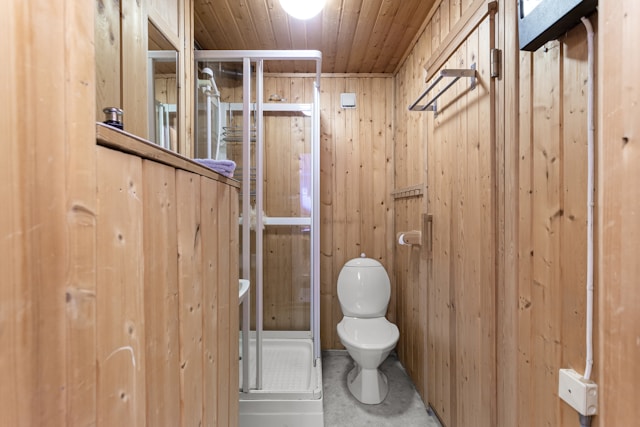Cleanliness and practicality have always been the driving forces behind the creation of bathroom fixtures. The sanitary closet is one of the key components of modern bathrooms, and it has changed significantly over time.
The concept of a sanitary closet originated in prehistoric societies, when public latrines were constructed above streams of water to facilitate the removal of waste. Basic sanitary systems were also built in Mesopotamia and the Indus Valley. A major improvement in sanitary practises was brought about in the 19th century with the invention of the water closet by Sir John Harrington and Alexander Cummings. With its clever use of water to properly remove waste, this flushing toilet gained universal acceptance and raised the bar for sanitation.
Types of Sanitary Closet
Close-coupled toilets
Since the cistern is fixed to the bowl, close-coupled toilets are renowned for their small size. This widely used style of sanitary closet is preferred due to its compact design, ease of installation, and effective use of available space.
Wall-mounted water closet
By mounting the bowl of a wall-mounted water closet directly to the wall, the cistern is effectively hidden, giving the toilet a sleek and contemporary appearance, which also comes with a 3 in 1 wall mixture. The ease of cleaning and space-saving nature of this kind of sanitary fixture make it popular.
Back-to-wall toilets
The concealed cistern design of back-to-wall toilets gives them a neat and modern appearance. Only the bowl is visible because the cistern is concealed behind a wall or inside a piece of furniture. This style contributes to a simple, minimalist look.
Corner Toilets
Because of their clever design, which allows them to fit neatly into bathroom corners, corner toilets are very useful in compact rooms. These incredibly practical sanitary closets maximise space while guaranteeing maximum practicality and unmatched comfort.
One-piece water closet
The bowl and tank of a one-piece water closet are combined into a single, seamless design. Because it fills in the spaces where dirt and filth tend to collect, this kind of sanitary fixture is known for its easy maintenance.
Features of Sanitary Closet
With their dual-flush systems for solid waste and decreased flush for liquid waste, modern sanitary closet encourage eco-friendly behavior and use less water. The hygienic design of rimless toilets, which removes potential areas for bacteria growth and simplifies cleaning and maintenance, has made them extremely popular.
Soft-close seats are also widely used; they prolong the life of the toilet seat by reducing noisy slamming and enhancing user comfort. These elements support the general layout and performance of contemporary sanitary closets.
Nowadays, bidet features with temperature settings, oscillating sprays, and adjustable water pressure are included in sanitary closets for personal hygiene. Smart toilets, which come with built-in deodorizers, seat warming, automated flushing, and Bluetooth connectivity for music or customised settings, are the result of advanced technologies. Users can enjoy a customised and pleasurable experience with these restrooms.
Conclusion
Modern bathrooms cannot function without sanitary closets thanks to their cutting-edge features, which include smart toilets with bidet capabilities, wall-mounted toilets that save space, and compact close-coupled toilets. In order to satisfy consumer demands for water efficiency, hygiene, and aesthetics, manufacturers are always coming up with new ideas. When choosing a sanitary closet, their extensive design selection and integration of cutting-edge technologies guarantee that each person’s preferences and demands are satisfied.


